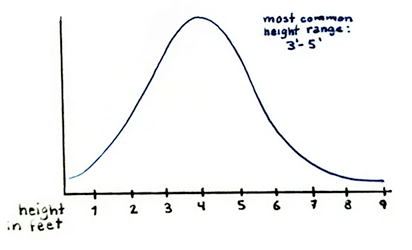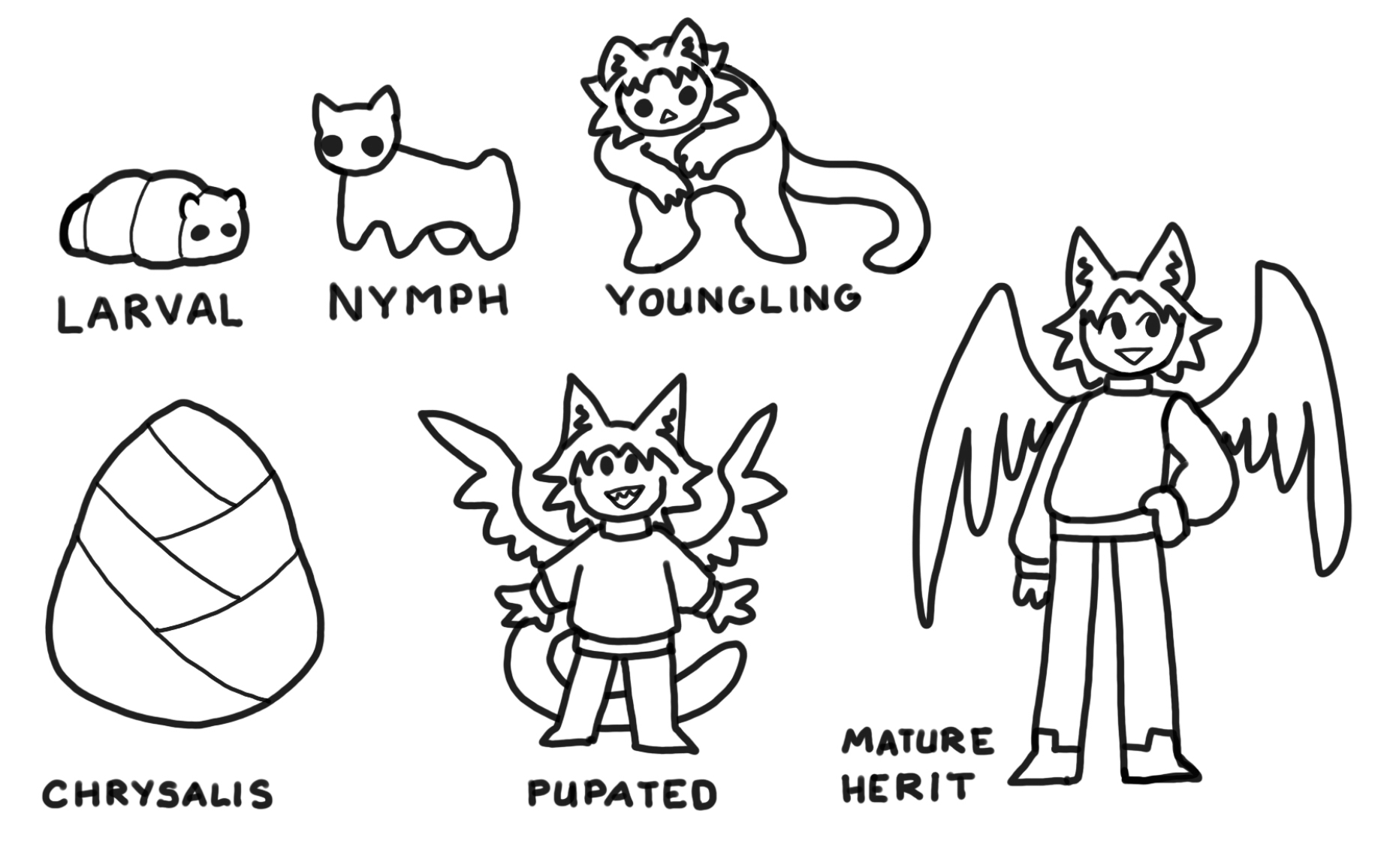 |
|---|
| Herit Height Distribution |
 |
| Herit Life Cycle |
Table of Content
- 1. Overview
- 2. Life Stages
- 2.1 Larval
- 2.2 Nymph
- 2.1 Chrysalis
- 2.2 Post-Pupation
- 2. Anatomy & Physiology
- 2. Life Stages
Overview
Herits are extremely varied littol buggy guys, which have evolved after humans went extinct. They all start out as identical little grubs, and evolve influenced by their environment to develop a wide array of unique attributes, growing though many stages, the last of which typically anthropomorphic. Their physionomy varies wildly but they usually grow at least one pair of head appandages (ears, horns, anteanaes), a pair of back appendages (usually wings) and a tail-like appendage. Every herit's name is five letters long. With an average height of around 4' tall, it is not impossible for Quinherits to be as small as a foot, and as tall as 9 feet; altough these are extreme cases, and are rarely encountered.
Life Cycle
by timetokrillLarval Stage
Nymph stage
Youngling stage
Chrysalis stage
Post pupation
Anatomy & Physiology
Herit evolve in many different ways, highly influenced by their surroundings.
Herits flesh is a soft, jello-like substance. It is quite soft and glutinous, sticking to itself. Bloodless, it is a cloudy. transluscent white, making blood color very influential to its final color. When born, grub flesh is uniform all the way through; but it quickly forms a skin where it contacts with air. This membrane thickens through its growth, over the ten-ish years of the first part of its life. During chrysalys, flesh, organs, everything liquifies and the gellification process begins anew, until the herit's body has been fully reformed. On emergence, young hatchlings's skin is firm, But not quite fully hardened. It usually takes 6 to 8 years for a hatched herit to reach final size and firmness; changes being much slower and less radical post-pupation. Final skin hardiness is determined by a variety of factors, but usually ends up in the ballpark of cow hide.